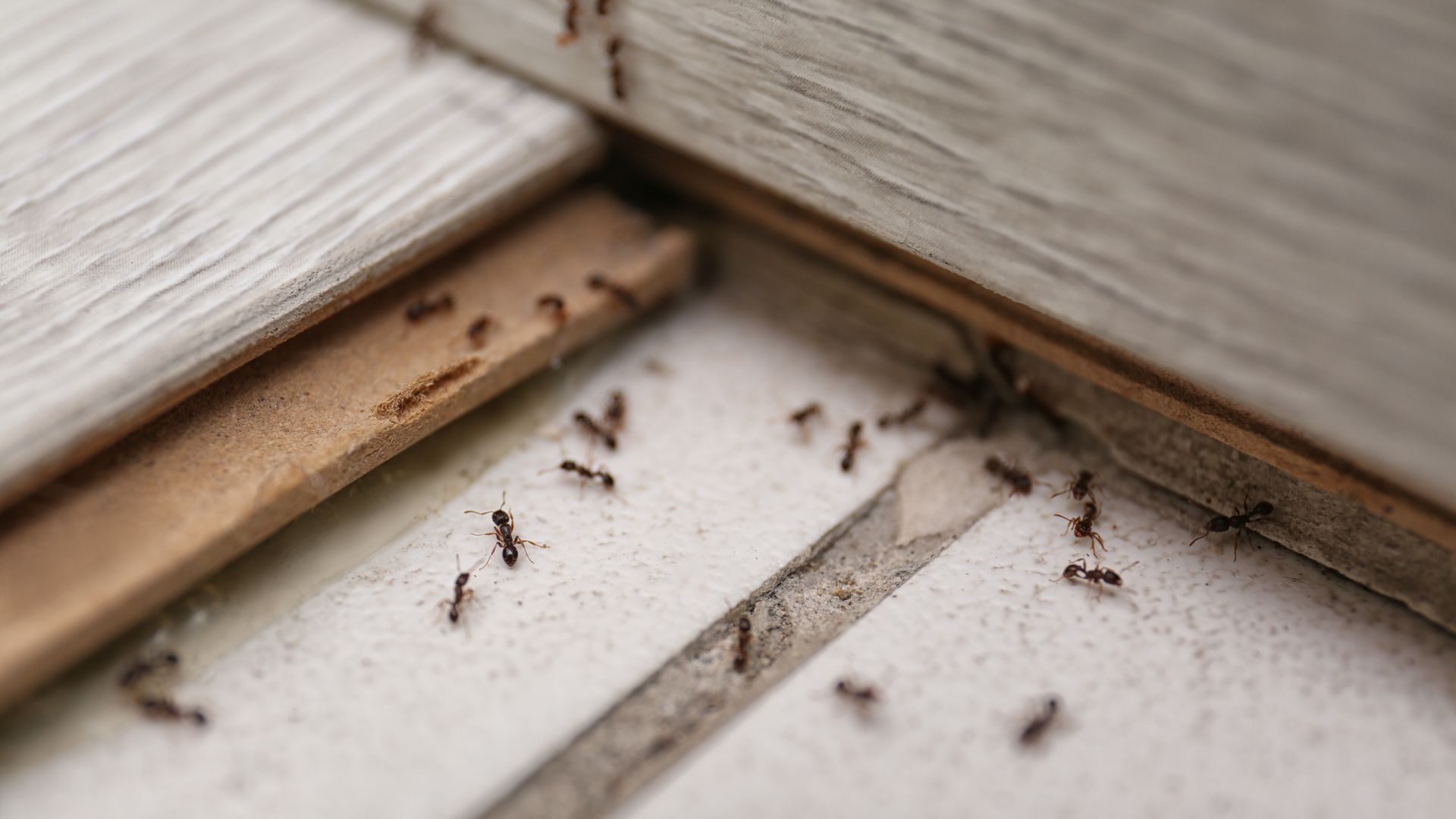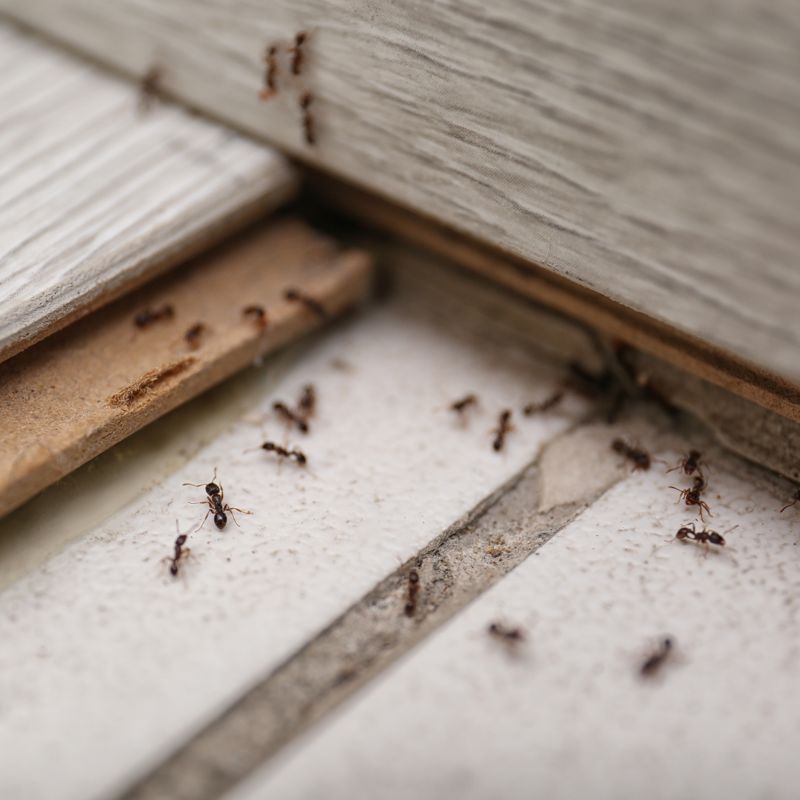
Everything You Should Know About Pesky Moles In Long Island
You wake up and find raised tunnels throughout your lawn, uprooted plants, or both. What is going on? You have a mole problem. What do you do? The best course of action is to contact A&M Quality Pest Control for mole pest control in Long Island. Mole control is a complicated process because moles have an impressive knack for avoiding trouble. When Long Island residents use the information found on the internet to solve their mole problems, they often learn that mole control products don't work as advertised. It isn't the fault of the manufacturers. Correct application is required for effective mole control. Join us as we take a look at moles in Long Island. We'll discuss everything you should know about them, a few of the pitfalls of trying to get rid of them on your own, and how trained professionals deal with these sneaky critters. If you have urgent mole control issues, keep in mind that you can navigate to our contact page and reach out to us immediately if needed. Our friendly, licensed, and experienced technicians are available to assist you.
What Is A Mole?
Moles are animals that are equipped to live underground. They primarily eat bugs, grubs, and earthworms, consuming as much as 70 to 100 percent of their body weight every day. On occasion, they feed on seeds, bulbs, and roots. Their presence in your yard is likely to result in damage to vegetation, even though these animals don't feed on much vegetation. Their tunneling behavior severs the roots of turfgrass and causes blades of grass to yellow and eventually die. As they feed on seeds and bulbs, they can cause the above-ground plants to die or become uprooted.
Moles are active critters and can tunnel day and night. They are most active in the morning and heading into the night. It is not uncommon for Long Island residents to go to bed with a beautiful, well-maintained lawn and wake up to a nightmare of surface tunnels marring all their hard work.
It is rare to see moles. If you notice a furry brown animal moving through your yard, it is likely to be a gopher. Some mole species spend as much as 99 percent of their lives underground. They have no need to come above ground as their food source is plentiful in the soil.
What Does A Mole Look Like?
We have two common mole species in Long Island. They are the Eastern mole (Scalopus aquaticus) and the star-nosed mole (Condylura cristata). You may also have a run-in with a hairy-tailed mole (Parascalops breweri). All moles have fur that lays flat against the skin, tiny eyes, no external ears, a hairless snout, and two front feet that angle to the sides. On their front feet are long claws used for tunneling. There are minor differences between the species. Here's what they look like, and why it matters.
- A star-nosed mole has a nose with tiny fingerlike projections that look like a starfish at certain angles. It grows to be about 5 inches long. It prefers ground that is near water and lawns that have poor drainage, setting this species apart from other North American moles. In the wild, it is mostly found in wetlands, marshes, deciduous forests, and peatlands. The tunnels of a star-nosed mole only rarely come close enough to the surface to produce a raised bump.
- An Eastern mole has a conical snout that makes it look like an anteater, and grows to be about 6 ½ inches long. They have a preference for fields, pastures, meadows, and open woodland, and will most likely be found in sandy or loamy soil that is not too wet or dry. You'll find these moles making raised tunnels in your yard, but they also create deep tunnels that you can't see. In studies, Eastern moles have been found to create as much as 30 meters of shallow tunnels in a single day.
- A hairy-tailed mole has a short, hairy tail, and grows to be about 5 ½ inches in length. They prefer soil that is well-drained, yet still moist. They don't like soil that is permanently wet and they steer clear of soil that has a high clay content. When it comes to creating tunnels, they behave like Eastern moles. But keep in mind that these moles are rare. Eastern moles are more likely to be the culprits creating lots of surface tunneling in your yard.
All moles cause damage when they come into your yard but Eastern moles are the worst in Long Island. Their ability to make extensive surface tunnels makes them public enemy number one in our area. These pests can make your yard look like an unsightly mess in a single night. If you've awakened to a lawn nightmare, there are a few things you should know.
What Causes Moles To Suddenly Start Coming To My Yard?
When mole damage appears, you may immediately ask this question. "Why my yard?" What is it about your property that made moles decide your yard was a great place to live? What did you do wrong? A cursory investigation of "mole attractants" on the internet may lead you to believe that grubs are to blame, and there are many products that offer mole and grub control. What are grubs? They are the larvae of beetles, and they are a desirable food source for moles. If you've noticed dead patches of grass and you are aware of a grub problem, you might think that removing the grubs will stop the moles. It is possible that moles have come to eat those grubs, but solving your grub problem is not likely to get rid of your mole problem. Should you get rid of the grubs? Sure. Grub control is super important because you need to arrest the damage the grubs are doing, and it will remove this food source that moles desire. It is a good first step in dealing with moles. But getting rid of a grub problem really isn't the best way to control moles. Why? Because moles can find other food sources in the soil underneath your lawn. You're going to need more than lawn mole control products that work to get rid of grubs in your yard.
Modern pest management focuses on natural solutions to pest problems. In many cases, removing attractants can deter pests from targeting a yard or home. It is beneficial to always ask the question, "Why is this pest coming to my yard?" Other animal pests, such as mice, rats, squirrels, raccoons, and skunks can all be deterred by removing the attractants that bring them into your yard. Unfortunately, removing attractants doesn't help all that much with mole problems. Moles don't just target unhealthy lawns that have dead patches created by grubs. They are just as attracted to healthy lawns that have truckloads of earthworms to feed on. Earthworms are essential for a healthy lawn. Removing them is not beneficial. Even if you could get rid of all those earthworms, moles can feed on bugs and other sources of protein. The soil on your property is filled with food for moles.
There really is no helpful way to stop moles from coming into your yard, and there isn't any way to drive them out once you have a problem. Though we do recommend addressing grubs, there is little hope that controlling grubs will help with moles.
How Can I Get Moles To Stop Ripping Up My Lawn?
The best solution for lawn mole control is to get professional assistance. A licensed professional uses a baiting and trapping strategy to stop moles in their tracks. Contact A&M Quality Pest Control if you live in Long Island. We use Integrated Pest Management (the gold standard in pest control) for controlling nuisance moles. The scientific methodology puts eco-friendly solutions first and uses field-tested control strategies. On top of this foundation, your technician has the experience to apply control products where they will achieve the best results, evaluate the pest control program and make adjustments, and ensure that no moles remain on your property. You'll also be given actionable data to help you decide on a plan to prevent future mole problems on your property.
It only takes a single mole to cause a ton of damage to your Long Island lawn, landscaping, or garden. While no amount of damage is irreparable, it can be costly to repair the damage caused by moles. It is best to deal appropriately with mole problems when they arise and make sure your property is free of these destructive pests.
Reach out to A&M Quality Pest Control for immediate assistance. In most cases, we can provide same-day service. You don't have to give your pest mole another day to create thirty more meters of tunnels in your yard, or several days to do who knows how much damage. Get help today.
Customer Review
They were professional and super helpful. Will continue using them and will recommend to anyone I know in need of their services.

Why Choose A&M Quality Pest Control?
Quality Service, Every time
-
Emergency ServiceEmergencies don't wait, and neither should you. Contact us now!
-
Satisfaction GuaranteeWe'll make sure you're completely satisfied - it's our guarantee.
-
Same-Day HelpGet a pest professional out fast with our same-day appointments.
-
Insured Company
Have peace of mind knowing our team is fully licensed, insured, and vetted.
Our Reviews
Our Reputation Speaks for Itself
-
"No-Brainer"
Recommending A&M is a no-brainer - polite, prompt, and professional... We haven't had a mosquito hit since A&M and we're backed up to a river. And the pricing is better. Thanks A&M
- Bill B. -
"A Company that Cares"
They are very caring and go the extra mile when taking care of their clients. I recommend them to everyone I know. If you want a company to care for you like family, use A&M!
- Meghan H. -
"Loyal Customer"
I don't hope I have another pest problem, but if I do, I'm gettin' these guys to work their magic again!
- Dani A. -
"Reliable Pest Control"
The pests are completely gone now, and I'm incredibly satisfied with their service. I highly recommend A & M to anyone in need of reliable pest control. Thank you for a job well done!
- Charles C. -
"Responsive & Professional"
A&M was extremely responsive, professional, and a pleasure to do business with... You won't be disappointed!
- Joseph C. -
"Highly Recommend"
It was a great experience and a great company, and I readily recommend it!
- Erica K. -
"Excellent Service"
Excellent service, highly recommended. The tech was professional, punctual, and knowledgeable. Use these guys for all your pest control needs, you won't be disappointed.
- Collin C. -
"Excellent Company"
I feel great knowing I can call them whenever an issue arises. Thank you guys so much! I'm so glad to have found such an excellent pest control company run by great people!
- AM S.

